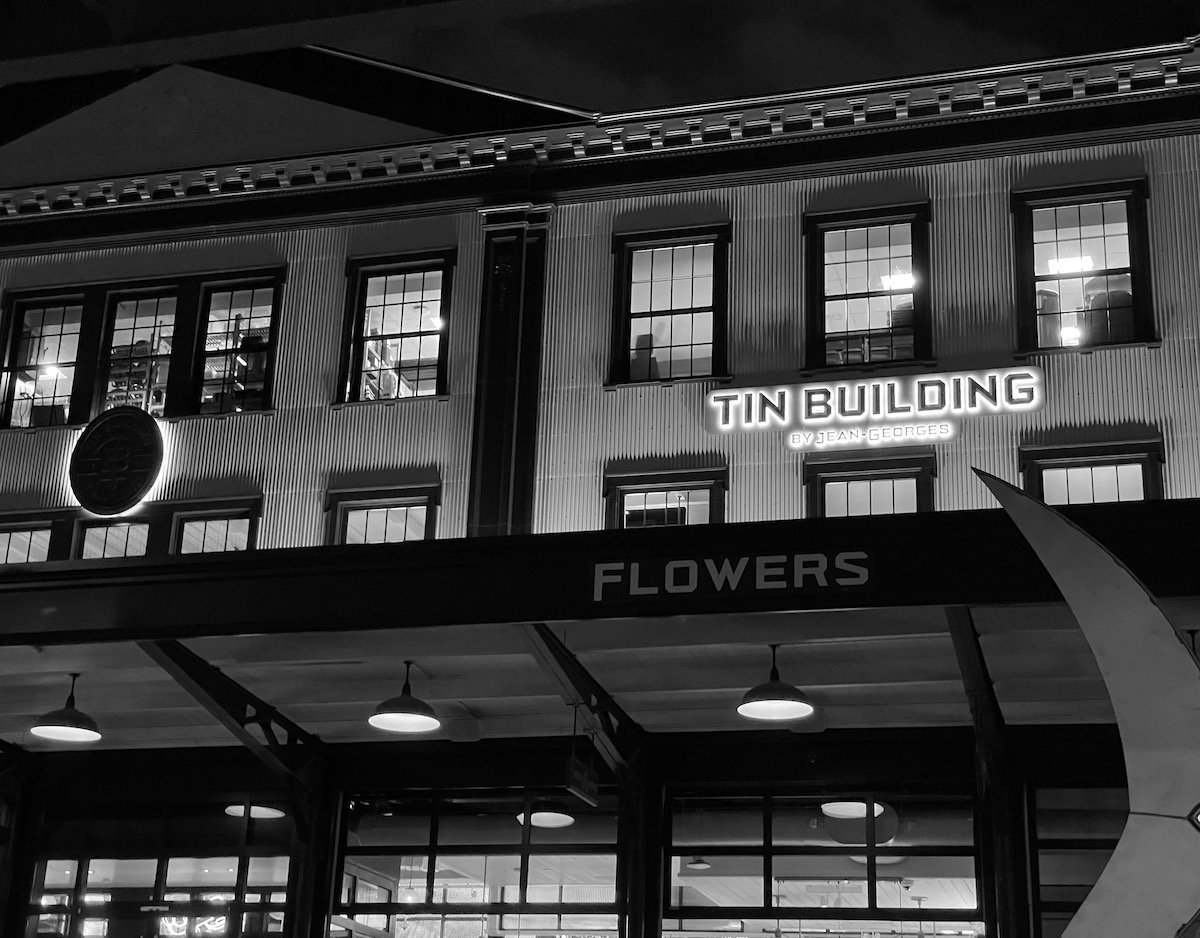the tin building project
2023
The Nobility of Work is a site -specific permanent installation drawn from photographs I made during the 1980’s on the waterfront of New York City. This project was commissioned by the Howard Hughes Corporation and celebrity chef Jean - Georges for the new Tin Building, reconstructed on its original location south of the Brooklyn Bridge in Lower Manhattan in 2022.
At its inception in 1835, the Fulton Fish Market was housed in a small wooden shed, which was rebuilt in 1848 and again in 1869. By 1907, the fourth version was built; the facade was covered with corrugated metal and was referred to as the “Tin Building”. The 1907 “Tin Building” was one of two major structures to accommodate an expanded Fulton Fish Market.
Over the decades “The Market” as it was affectionately called, was crucial to the operations of the East River waterfront making New York City into the most powerful mercantile center in the country. It was a nocturnal, mysterious world filled with individuals whose faces, verbal banter, and body language reflected authentic street personalities of New York. I was fascinated by this urban tribe of workingmen and set out to document their operations. However, to do this I needed to earn the confidence of all those workers and most critical, the blessing of powerful men that ruled their “fiefdom”. It was a daunting task, one that would take years.
The original negatives, mostly shot with my favored Rolleiflex camera, were carefully reconsidered and digitally reformatted for three large walls of electronic screens of various sizes and configurations.
With assistance from artist Claire Gilliam, we assembled several different thematic “storyboards”: portraits of the men who worked night after night in the Fulton Fish Market; their working environment and the customers they served. Another series of screens reveal the words of the workers themselves: stories and philosophies I compiled when the original pictures were created. Two large Dibond prints of the original Tin Building interior set the stage for the moving images on the adjacent walls.
As this is in a public space in which people enter and exit the Tin Building, the installation called for dynamic ways to capture their attention. The use of electronic screens would be a perfect solution. It would be a departure for me, someone who had previously preferred to show work as framed objects on a gallery wall.
Claire and I pored over hundreds and hundreds of images to find the pictures that were not only visually compelling on their own but that would work side by side with others to tell a complete story. This activity brought me back to my fascination with artists of the Renaissance who encountered similar challenges creating their panel paintings, stained glass windows and wall frescoes within predetermined guidelines. The screens also allowed me to explore a sensibility I have always had for cinema. Working with videographer Roger Guillen, we choreographed each image and wall sequence to tell a “story within a story”, communicating time and movement.
The ultimate goal of the installation is to challenge the viewer to viscerally experience the working life of the men on the waterfront. What happens between the viewer and the work is the next story.
Read more about the work, the history of the Tin building and the project on The Seaport Blog.
With the additional participation of :
Laumont Photographics and Roger Guillen
Special thanks to Claire Gilliam
Claire Gilliam was born England and has lived in the United States since 1999, becoming an American Citizen in 2017. Her work has been shown in Europe and the USA and is held in private and public collections, including The ICP Library Print Collection and the Goethe Institute. Her work is represented by Galerie l’Atelier in NYC and Greenwich, Connecticut.




